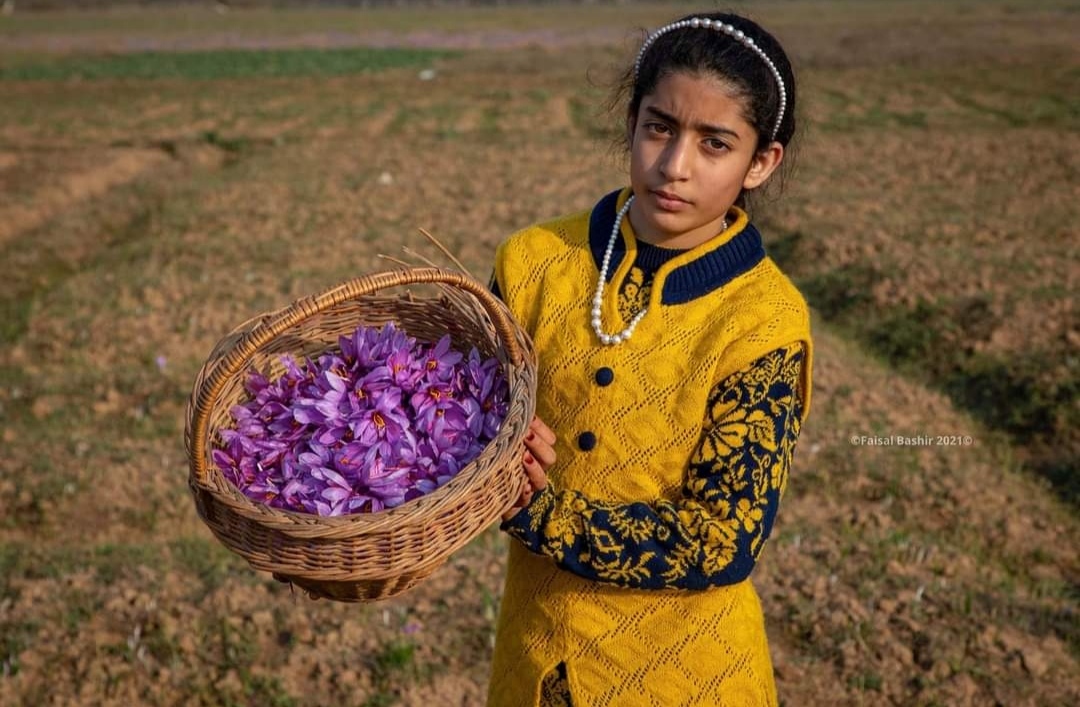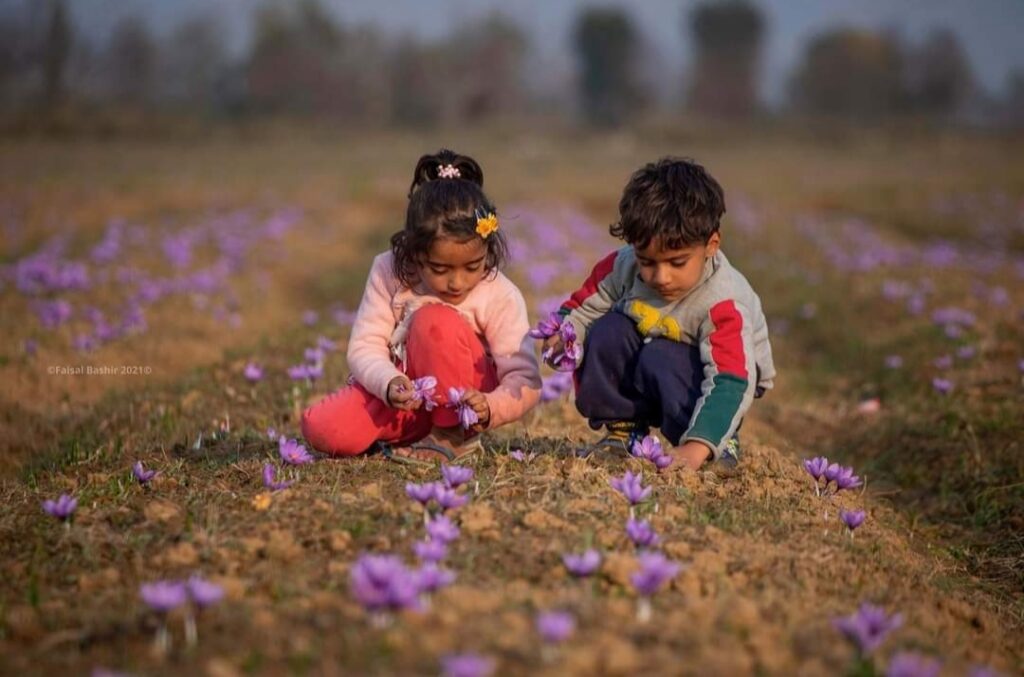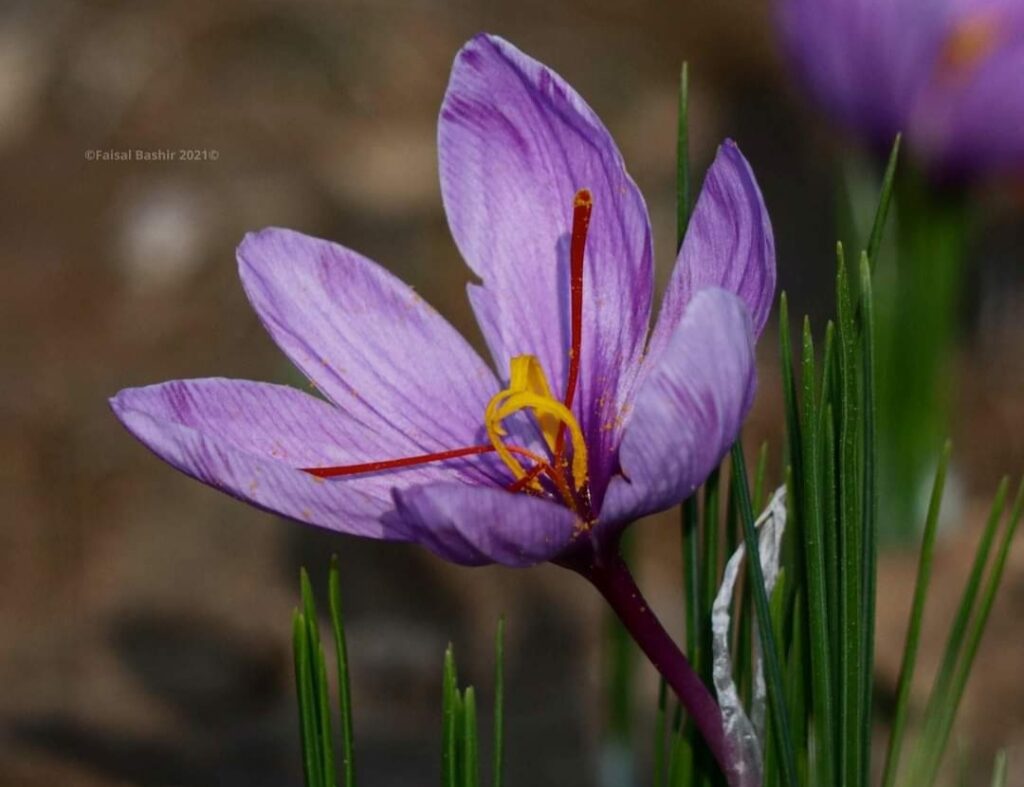Season’s first saffron harvest brings joy to Kashmiri farmer

Pulwama, : Farooq Ahmad Dar, a seasoned farmer from Samboora village in Pulwama district, is rejoicing over the season’s first saffron harvest. However, what sets this year apart is the unconventional approach he adopted for saffron cultivation, bringing a new level of enthusiasm to the local farming community.
Farooq Ahmad explained that this year’s saffron crop was grown in plains, a departure from the traditional high-altitude cultivation of this prized spice.

He attributes this success to the moisture-retaining properties of the soil, enriched by the shade provided by poplar trees. Saffron, typically grown along the plateaus known as Karewa land, faced an unconventional change in cultivation practices as Dar earmarked a portion of plain land, referred to by villagers as Pathul, for saffron corm production.
Last year, this experiment yielded an impressive 40 kilograms of fresh saffron flowers. Dar anticipates a full bloom on the upcoming Monday. The fresh flowers harvested by Dar have sparked enthusiasm among the local farming community.
An eye catching picture of the farmer, diligently separating saffron stigma, gained substantial attention on social media, amassing more than one lakh impressions on Facebook.
Dar emphasized the importance of moisture retention in the soil, especially during September and October, for successful saffron cultivation.
He suggested that planting almond trees in Karewa land could further aid in moisture retention by providing shade to the saffron beds.Experts have underlined the critical nature of the period between August 25th and September 5th, during which water is needed to break corm dormancy.
This phase witnesses the growth of corm roots, which is crucial for the new sprouting season. Concerns had arisen among saffron growers due to a dry spell in August and September.
These farmers had urged authorities to activate deep bore wells established under the National Saffron Mission Programme in 2010 to irrigate the saffron fields.
Fortunately, rainfall on September 25 and October 8th came as a blessing for the worried saffron growers.
Director of Agriculture Production and Farmers Welfare Kashmir, Mohammad Iqbal Chowdhry, expressed optimism during his visit to Pampore Saffron fields.
He highlighted that the late September and early October rainfall provided the necessary moisture for saffron corm growth. He also visited Samboora and Patal Bagh villages, where farmers have already reaped the first crop of saffron under shaded areas along the banks of the River Jhelum.
Chowdhry said that he hoped for a good saffron harvest this year, with the peak flowering season expected between October 25th and November 10th.
Saffron (Crocus Sativus), a perennial herbaceous plant, is typically cultivated in the Mediterranean region. The largest global producers of saffron include Iran, India, and Spain.
In India, commercial saffron cultivation is mainly concentrated in Pulwama, Srinagar, and Budgam districts of Kashmir, with Kishtwar and Doda districts of Jammu also contributing to the saffron industry.

The journey from corm to flower is an intricate one, as an average-sized corm of 10 grams can produce two to three saffron flowers in a season.
These striking saffron flowers begin to emerge from October 10th, with late blooms extending up to November 10th.
The full bloom is traditionally observed after October 21st, and each farmer can enjoy up to five turns of harvests in a season.
The essence of saffron lies in its prized stigma, which is carefully dried and used as a valuable spice in cuisines, a flavourful addition to beverages, and a key ingredient in various medicinal preparations.
This Story Is Edited and Report By Rising Kashmir





